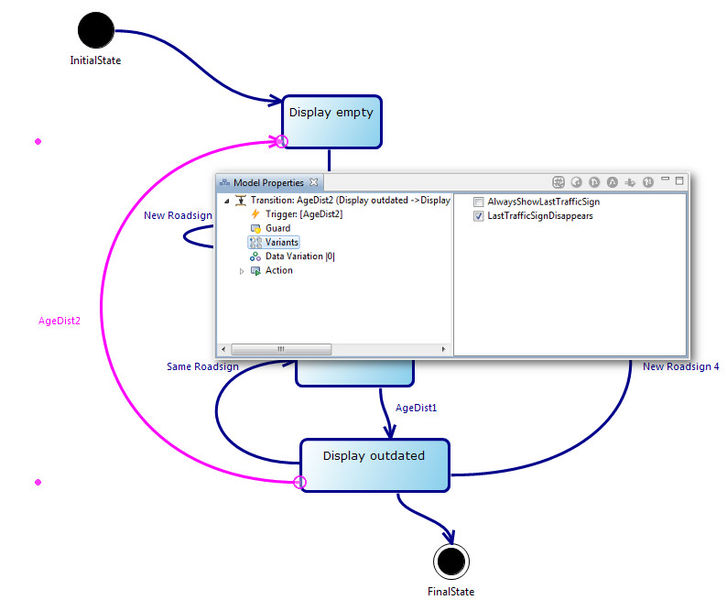EASY MODELLING WITH MODICA
HIERARCHICAL MODEL
In MODICA, a model is hierarchically structured. This makes it possible to improve the structure and clarity of individual system processes. If there´s a possibility of several actions within a state, this can be modelled in a sub-state.
ACTIONS
Each state and each transition can be assigned with actions. This makes it possible for states to execute each entry and exit action as soon as it is entered or exited. For example:
- These may be limitations: e.g., a state can only be exited if a certain condition is fulfilled
- Calculations like the incrementing of a variable
- Textual descriptions
- Specific operations of the automation system.
REQUIREMENT MANAGEMENT
The connection to requirement management tools such as IBM Rational DOORS allows fast linking with the textually defined requirements: in MODICA they are simply dragged onto the corresponding elements in the diagram. In addition, you can see at a glance which requirements have already been installed in the model and whether the model is consistent with the requirements database. Changes in the requirements can be easily followed in the model.
VARIANT MANAGEMENT
A continually growing number of products, which are very similar and differ in part only in details, require a structured variant management. For this reason, several variants can be generated in MODICA via a special graphical interface from a single model. For each state transition can be selected if it is contained in a variant or not. All variants can be hierarchically organised into groups and can thus be quickly selected and deselected. Later on, it is possible to define different test targets depending on the variant during the test case generation.
PARALLEL STATE CHARTS
Simultaneous sequences can be easily modelled in MODICA by parallel state diagrams. In this way, independent operating procedures can be described in models in an easily understandable manner. The test case generator takes into account the interruptibility of the individual sequences and thus creates complex interaction scenarios.
IMPORT
UML models are the basis for the test generation in MODICA. By the connection of the modelling environments, the test process can be efficiently designed, as .xmi files (generated by standard modelling tools) can be easily imported into MODICA.
VALIDATION
Especially in the case of large and complex models, modelling errors or inconsistencies can arise. A model validation is available in MODICA. This makes it possible to quicker recognize sources of errors and easier remedied them. Errors can be easily localized by a graphical and / or textual visualisation, for example in the diagram, in the editor field of computations or a specially designed view. Additionally, the manual provides a list with common errors and solutions to ensure a smooth workflow for the users of MODICA.




